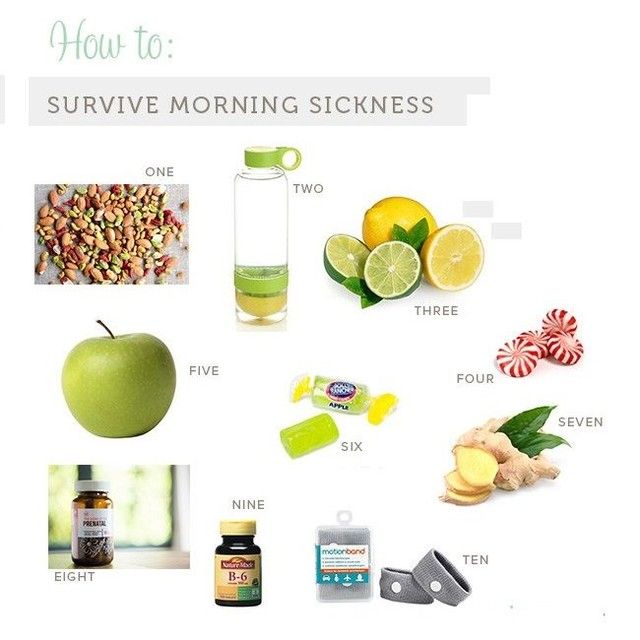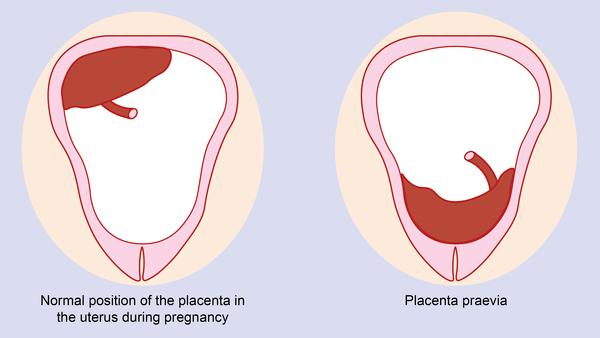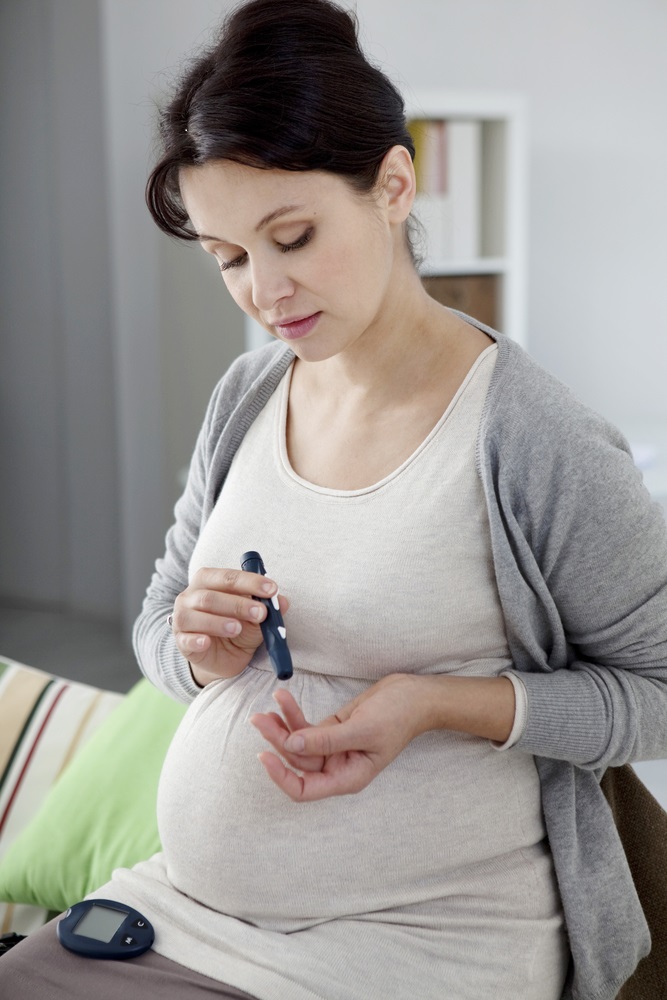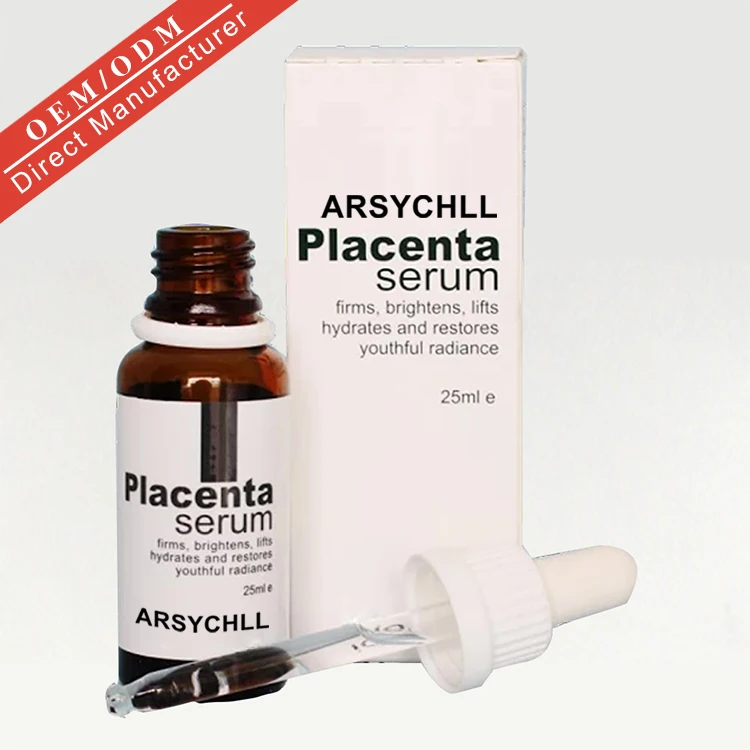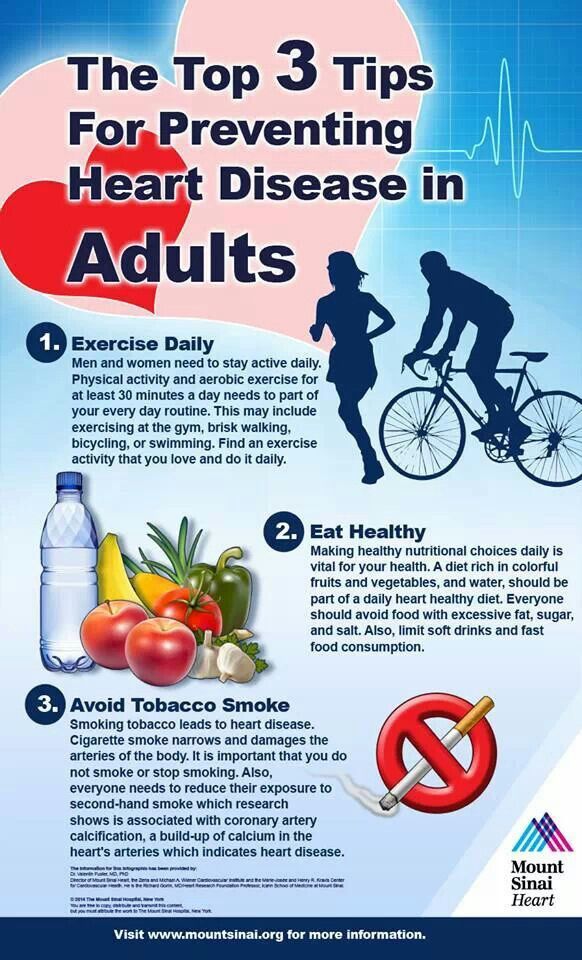How to control morning sickness
10 tips to relieve it
Morning sickness is often one of the first signs of pregnancy. It is a common complaint, but it often passes by 3 months into the pregnancy. However, for some women, severe morning sickness can be bothersome.
Over half of all pregnant women experience nausea.
Morning sickness can last all day for some women. It usually starts around week 6 of pregnancy and disappears around week 12, but different women will have different experiences.
Morning sickness does not need medical attention unless it is severe and leads to dehydration and weight loss. Some tips and home remedies can help.
Fast facts about morning sickness
- Morning sickness occurs in over 50 percent of women who become pregnant.
- It can be managed in a number of ways, including through dietary measures, acupressure, and rest.
- Active medical treatment is only required in cases of excessive vomiting.
- The use of medications is not recommended during pregnancy until prescribed.
Most women will not experience excessive vomiting, but many will have some discomfort due to nausea.
Here are some tips for minimizing the unpleasant symptoms of nausea during pregnancy.
1) Get plenty of rest
It is important to get a good night´s sleep. Napping during the day may help too, but not straight after a meal, as this can increase nausea.
For those who work night shifts, it may help to wear a sleep mask or use blackout curtains to block out as much light as possible.
As time goes on and the body changes shape, a maternity body pillow may help your back and abdomen.
Go to bed early and wake up early, so you can take time to get out of bed.
Do not use sleeping pills unless a doctor prescribes them.
2) Eat with care
Fatty and spicy foods and caffeine increase the chance of triggering the release of stomach acid, especially as the pregnancy progresses and the fetus pushes against the digestive tract. Bland foods may be less aggravating.
Bland foods may be less aggravating.
Small portion sizes can help reduce the chance of vomiting but keep something in the stomach. Having an empty stomach can worsen the feelings of nausea. The stomach produces acids, but they have nothing to work on, except for the stomach lining. This adds to the feelings of nausea.
Having some salty crackers or a protein snack before getting out of bed in the morning may help.
At breakfast, cold apple sauce, pears, bananas or any citrus fruit will help you feel satisfied early. The fruit’s potassium may help prevent morning sickness.
Carbohydrates can help. Baked potatoes, rice, and dry toast are often suitable options.
At night, eating a high-protein snack before going to bed will help regulate your blood-glucose levels during the night.
Eat food cold to reduce the smells experienced when eating.
3) Keep physically and mentally active
Being physically active has been found to improve symptoms in women who experience nausea during pregnancy.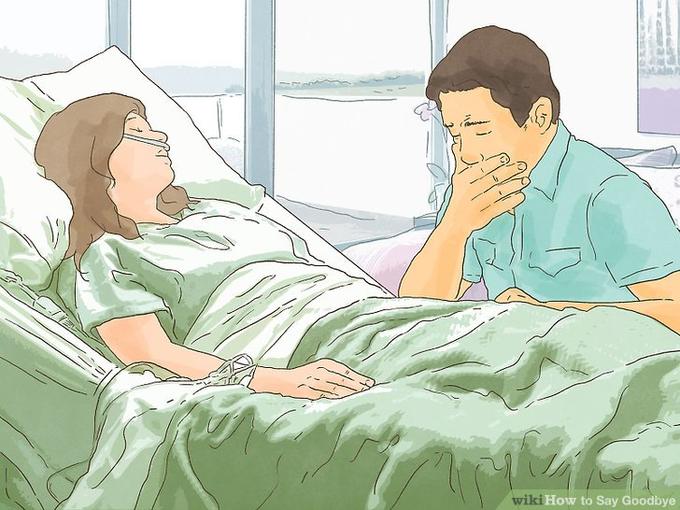
Keeping busy can help take your mind off the feelings of nausea. Reading a book, doing puzzles, watching television, playing cards, or going for short walks around the block will help to keep you preoccupied.
4) Ensure good fluid intake
It is important to stay hydrated for good health, especially during pregnancy.
It may be hard to consume eight glasses of water a day while experiencing nausea, but dehydration can aggravate feelings of nausea.
Adding apple cider vinegar and honey to water may make it more palatable.
Sucking ice cubes made from water or fruit juice is also an effective method.
5) Ginger and peppermint teas
Ginger has long been used to aid digestion and reduce abdominal discomfort. Studies show that it may also help relieve the symptoms of nausea.
Other options are to sip cold ginger ale or to add a slice of raw ginger to water or tea.
Snacks such as gingerbread, or ginger cookies may also help.
Peppermint tea may also help settle the stomach.
6) Wear loose and comfortable clothing
Restrictive or tight clothing may worsen the symptoms of nausea. Women who experience nausea during pregnancy have fewer symptoms of nausea when they wear loose-fitting clothes.
7) Vitamins and supplements
Supplements should only be used under a doctor’s supervision. If you are taking vitamins, it may be best to take them before bed and with a snack.
Vitamin B6 may help reduce nausea.
Iron supplements that are prescribed during pregnancy can sometimes lead to nausea. A doctor may recommend a slower-release form or a lower dosage. Take iron supplements with orange juice or another drink with Vitamin C to increase absorption.
8) Avoid computer monitor flicker
A computer monitor flickers rapidly and almost unnoticeably. This may contribute to morning sickness.
If it is not possible to avoid using a computer monitor, it may help to adjust the screen by making the fonts bold and larger and changing the background to a soft tan or pink color.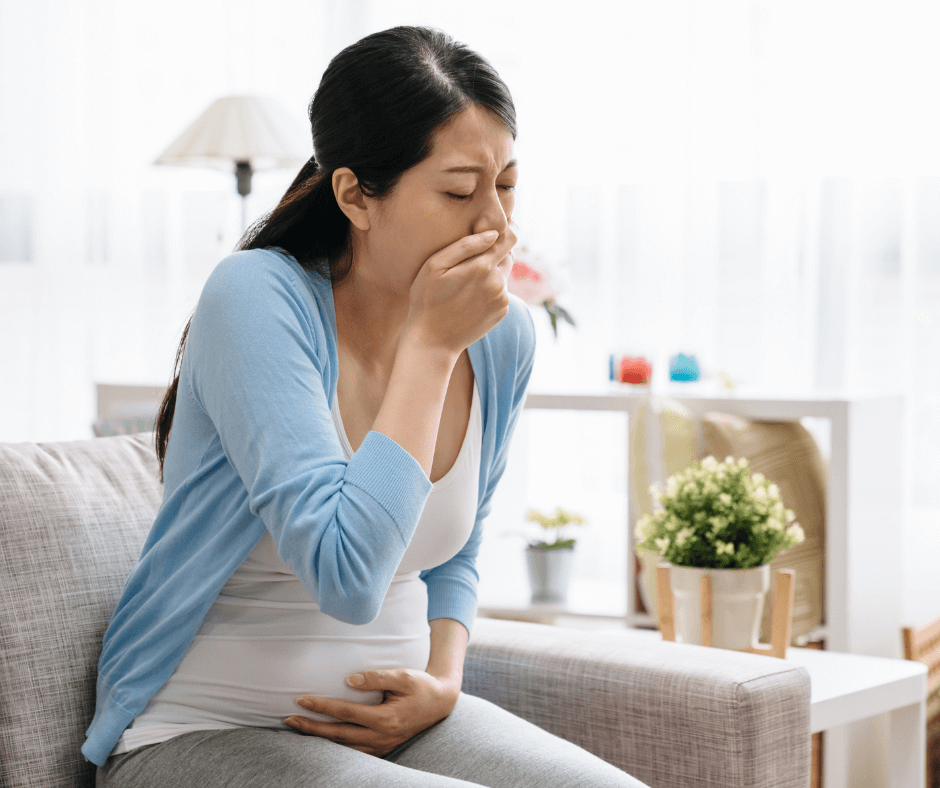 This will help reduce eye strain.
This will help reduce eye strain.
9) Avoid triggers
Morning sickness is linked to an increased sensitivity to smell.
Some strong smells can worsen the symptoms, but scents such as lemon extract and rosemary may help.
An individual will learn to recognize which triggers bring on an episode of nausea, and they can avoid these as far as possible.
10) Help for acid reflux
Sometimes, the nausea and vomiting may be due to acid reflux.
A doctor may be able to recommend antacid medication to take before going to bed to reduce stomach acid levels, and the subsequent morning vomiting.
Always check with a doctor before taking any medication during pregnancy.
Alternative therapies such as acupressure may help. Applying pressure on specific points on the body may help control symptoms. It may involve wearing a motion-sickness band on the forearm.
The feelings of nausea do not happen only in the morning. Most women find they ease as the day goes on, but, for some women, they may continue all day.
Nausea during pregnancy is normally associated with an increase in estrogen levels, low blood sugar counts, and a greater susceptibility to some smells.
The exact reason is unknown, but factors may include:
- a rise in hormones, especially estrogen, progesterone, human chorionic gonadotrophin (HCG), and cholecystokinin, leading to changes in digestive activity
- a fall in blood sugar, resulting from the placenta’s need for energy
Another theory on what contributes to nausea in early pregnancy is related to the sense of smell. A woman’s sense of smell is more sensitive in pregnancy, and this could increase the feelings of nausea.
It is most likely to occur during the first 3 months of pregnancy, and it often subsides once into the second trimester.
Research has suggested that nausea and vomiting during pregnancy are a good sign, and they are associated with a lower risk of pregnancy loss.
Excessive vomiting during pregnancy is known as hyperemesis gravidarum. It can lead to dehydration, malnutrition, and weight loss.
It can lead to dehydration, malnutrition, and weight loss.
It affects around 1 in every 300 women during pregnancy, usually only during the first 20 weeks of pregnancy.
A woman should see a doctor if:
- she loses more than 2 pounds in weight
- she vomits blood, which may be red or black
- she vomits more than four times in one day
- she is unable to keep fluids down for more than one day
The doctor may recommend dietary changes, plenty of rest and the use of antacids. In severe cases, the patient may need to receive fluids and nutrition intravenously.
The American Pregnancy Association (APA) suggest eating:
- Cold foods
- Plain fruits and vegetables
- Bland foods, such as chicken soup
As snacks, the APA recommend:
- pretzels
- Jell-O
- flavoured popsicles
- Preggie Pops, a kind of candy in different flavors such as mint, lemon, and ginger, designed to reduce the sensation of nausea
Medications are not recommended as they may have unexpected adverse effects during pregnancy. Speak to a doctor about non-medicinal remedies for morning sickness.
Speak to a doctor about non-medicinal remedies for morning sickness.
Vomiting and morning sickness - NHS
Nausea and vomiting in pregnancy, often known as morning sickness, is very common in early pregnancy.
It can affect you at any time of the day or night or you may feel sick all day long.
Morning sickness is unpleasant, and can significantly affect your day-to-day life. But it usually clears up by weeks 16 to 20 of your pregnancy and does not put your baby at any increased risk.
There is a chance of developing a severe form of pregnancy sickness called hyperemesis gravidarum. This can be serious, and there's a chance you may not get enough fluids in your body (dehydration) or not get enough nutrients from your diet (malnourishment). You may need specialist treatment, sometimes in hospital.
Sometimes urinary tract infections (UTIs) can also cause nausea and vomiting. A UTI usually affects the bladder, but can spread to the kidneys.
A UTI usually affects the bladder, but can spread to the kidneys.
Non-urgent advice: Call your midwife, GP or 111 if:
you're vomiting and:
- have very dark-coloured urine or have not had a pee in more than 8 hours
- are unable to keep food or fluids down for 24 hours
- feel severely weak, dizzy or faint when standing up
- have tummy (abdominal) pain
- have a high temperature
- vomit blood
- have lost weight
Treatments for morning sickness
Unfortunately, there's no hard and fast treatment that will work for everyone’s morning sickness. Every pregnancy will be different.
But there are some changes you can make to your diet and daily life to try to ease the symptoms.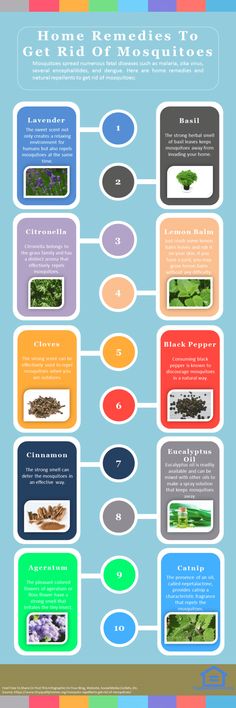
If these do not work for you or you're having more severe symptoms, your doctor or midwife might recommend medicine.
Things you can try yourself
If your morning sickness is not too bad, your GP or midwife will initially recommend you try some lifestyle changes:
- get plenty of rest (tiredness can make nausea worse)
- avoid foods or smells that make you feel sick
- eat something like dry toast or a plain biscuit before you get out of bed
- eat small, frequent meals of plain foods that are high in carbohydrate and low in fat (such as bread, rice, crackers and pasta)
- eat cold foods rather than hot ones if the smell of hot meals makes you feel sick
- drink plenty of fluids, such as water (sipping them little and often may help prevent vomiting)
- eat foods or drinks containing ginger – there's some evidence ginger may help reduce nausea and vomiting (check with your pharmacist before taking ginger supplements during pregnancy)
- try acupressure – there's some evidence that putting pressure on your wrist, using a special band or bracelet on your forearm, may help relieve the symptoms
Find out more about vitamins and supplements in pregnancy
Anti-sickness medicine
If your nausea and vomiting is severe and does not improve after trying the above lifestyle changes, your GP may recommend a short-term course of an anti-sickness medicine, called an antiemetic, that's safe to use in pregnancy.
Often this will be a type of antihistamine, which are usually used to treat allergies but also work as medicines to stop sickness (antiemetic).
Antiemetics will usually be given as tablets for you to swallow.
But if you cannot keep these down, your doctor may suggest an injection or a type of medicine that's inserted into your bottom (suppository).
See your GP if you'd like to talk about getting anti-sickness medication.
Risk factors for morning sickness
It's thought hormonal changes in the first 12 weeks of pregnancy are probably one of the causes of morning sickness.
But you may be more at risk of it if:
- you're having twins or more
- you had severe sickness and vomiting in a previous pregnancy
- you tend to get motion sickness (for example, car sick)
- you have a history of migraine headaches
- morning sickness runs in the family
- you used to feel sick when taking contraceptives containing oestrogen
- it's your first pregnancy
- you're obese (your BMI is 30 or more)
- you're experiencing stress
Visit the pregnancy sickness support site for tips for you and your partner on dealing with morning sickness.
Find maternity services near you
Sign up for pregnancy emails
Sign up for Start4Life's weekly emails for expert advice, videos and tips on pregnancy, birth and beyond.
Video: how can I cope with morning sickness?
In this video, a midwife gives advice on how to deal with morning sickness during your pregnancy.
Media last reviewed: 27 February 2017
Media review due: 27 March 2020
Page last reviewed: 13 April 2021
Next review due: 13 April 2024
Acupressure for Pain and Headaches
Share
Time to read: Approximately 2 min.
This information explains how to use acupressure (AK-yoo-PREH-sher) to help with nausea and prevent vomiting. Nausea is the sensation of vomit. Vomiting is the eruption of vomit.
Nausea is the sensation of vomit. Vomiting is the eruption of vomit.
Acupressure is a type of massage. It is based on the traditional Chinese medicine practice of acupuncture (AK-yoo-PUNK-cher). With acupressure, pressure is applied to certain points of the body. Such points are called acupuncture points (AK-yoo-points).
Pressing these points allows the muscles to relax and improves blood circulation. It also helps relieve many of the side effects of chemotherapy, such as nausea and vomiting.
You can do acupressure at home by applying pressure to various acupuncture points with your fingers. To learn how to do acupressure, watch this video or follow the steps below.
This video will show you how to perform acupressure to help relieve nausea and vomiting.
Details on video
Massage point P-6 is also known as nay-gwann. It is located on the back of the hand next to the wrist. Massaging this point helps relieve nausea and prevent vomiting.
It is located on the back of the hand next to the wrist. Massaging this point helps relieve nausea and prevent vomiting.
Massage of this point is not recommended in the following cases:
- The skin at or near the point is scaly or blistered.
- Open wound at or near a point.
- Rash at or near this point.
- Redness, swelling, fever or pus at or near a point.
How to find a massage point P-6
To find the P-6 massage point:
- Position the hand so that the fingers are pointing up and the palm is facing you.
- Place the first 3 fingers of your other hand on your wrist (see figure 1). Your fingers should be just below the crook of your wrist.
- Place your thumb just below your index finger. Remove 3 fingers from your wrist, but leave your thumb in place (see Figure 2). Press on this place with your thumb. Under the thumb, you should feel 2 large tendons (tissue that connects muscles to bones).
 This spot between the two tendons is the P-6 massage point.
This spot between the two tendons is the P-6 massage point. - Once you have found the massage point, you can relax your hand and keep it in a comfortable position.
Figure 1. How to place 3 fingers on the wrist to locate the thumb
Figure 2. How to press the thumb to the point under the index finger
- Press this point with your thumb. While pressing, make circular movements with your thumb. You can move it clockwise (right) or counterclockwise (left). Do this for 2-3 minutes.
- Some people may find it difficult to use their thumb. Instead, you can use your index finger.
- Press hard enough, but not so hard that it hurts. You may feel some discomfort or tenderness, but it should not be pain. If you feel pain, then you are pressing too hard.
- Repeat steps 1 to 4 on the other wrist.
You can massage this point several times a day until symptoms improve.
Acupressure is an additional treatment.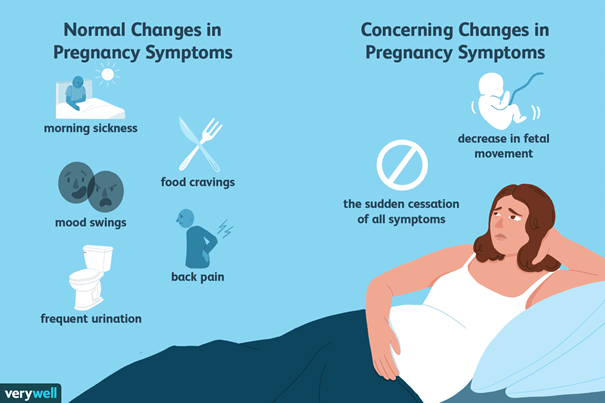 Complementary therapies are treatments that can be used alongside primary cancer therapy. They can help relieve symptoms.
Complementary therapies are treatments that can be used alongside primary cancer therapy. They can help relieve symptoms.
For more information about complementary treatments, call MSK's Integrative Medicine Service at 646-449-1010 or visit www.mskcc.org/integrativemedicine.
You must have JavaScript enabled to use this form.
Share your opinion
Give us your feedback
Your feedback will help us improve the information we provide to patients and caregivers.
Questions
| Questions | Yes | To some extent | No |
|---|---|---|---|
| Was this information easy for you to understand? | Yes | To some extent | No |
What should be explained in more detail?
Date last updated
Early toxicosis of pregnant women - causes and treatment
- When early toxicosis begins during pregnancy
- Manifestation of early toxicosis
- Early causes of toxicosis
- Severity of toxicosis during pregnancy
- How to manage morning sickness and relieve symptoms
- Principles of treatment of early toxicosis
Most women, having barely learned about the onset of pregnancy, are waiting for poor health, nausea and even vomiting.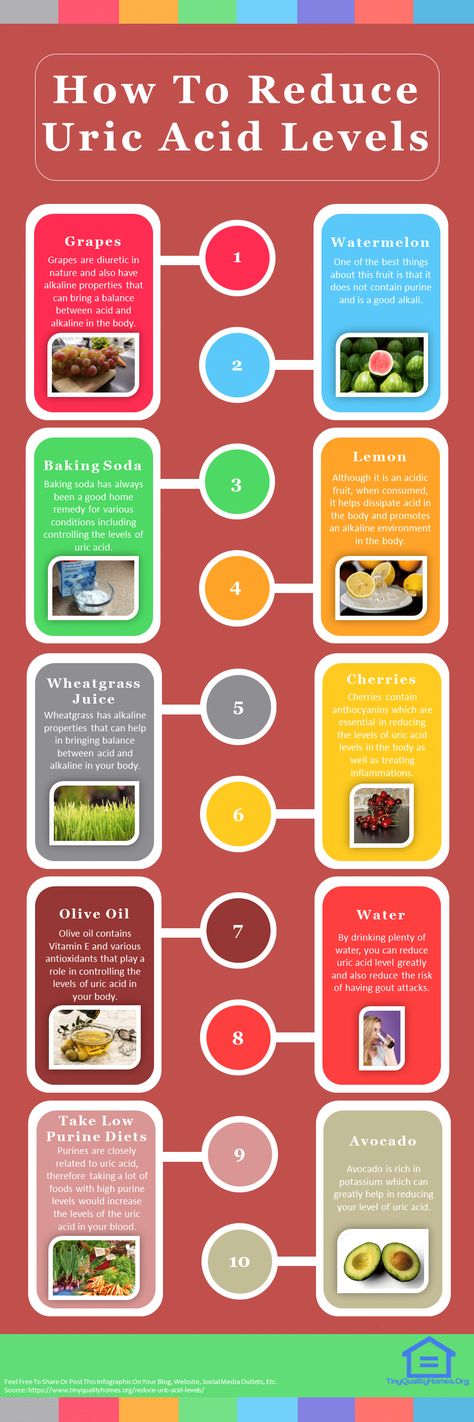 Indeed, early toxicosis often becomes a constant companion of many expectant mothers in the early stages of pregnancy. Is there any way to alleviate these unpleasant symptoms?
Indeed, early toxicosis often becomes a constant companion of many expectant mothers in the early stages of pregnancy. Is there any way to alleviate these unpleasant symptoms?
Toxicosis (and doctors call this condition preeclampsia) is a syndrome that is defined as a violation of a woman's adaptation to pregnancy. According to the time of occurrence, early preeclampsia is distinguished, which will be discussed in this article, and late preeclampsia, which appears in the last 2-3 months of pregnancy and is manifested by edema, increased blood pressure and the appearance of protein in the urine.
When early morning sickness begins in pregnancy
Early morning sickness usually occurs in the first half of pregnancy. As a rule, after the end of the formation of the placenta, that is, at 12-13 weeks of pregnancy, the phenomena of toxicosis stop. During a normal pregnancy, adaptive changes in the function of almost all organs and systems occur in a woman's body, which are regulated by the nervous system with the participation of endocrine glands. Toxicosis also occurs due to the impossibility of the adaptive mechanisms of the body of the expectant mother to adequately meet the needs of the developing fetus.
Toxicosis also occurs due to the impossibility of the adaptive mechanisms of the body of the expectant mother to adequately meet the needs of the developing fetus.
The manifestation of early toxicosis
The most common manifestation of toxicosis is vomiting. Other forms of early toxicosis are very rare:
- pregnancy dermatosis is a group of skin diseases that occur during pregnancy and disappear after it. When it occurs in early pregnancy, dermatosis is caused by immune disorders in the body of a pregnant woman, and is also most often found in patients with diseases of the digestive and endocrine systems. The most common form of dermatoses of pregnancy is pruritus gravidarum, which can be on a small area of the skin or spread throughout the body, including the feet and palms.
- tetany (chorea) of pregnant women. This condition occurs when the function of the parathyroid glands decreases, as a result of which calcium metabolism in the body is disturbed.
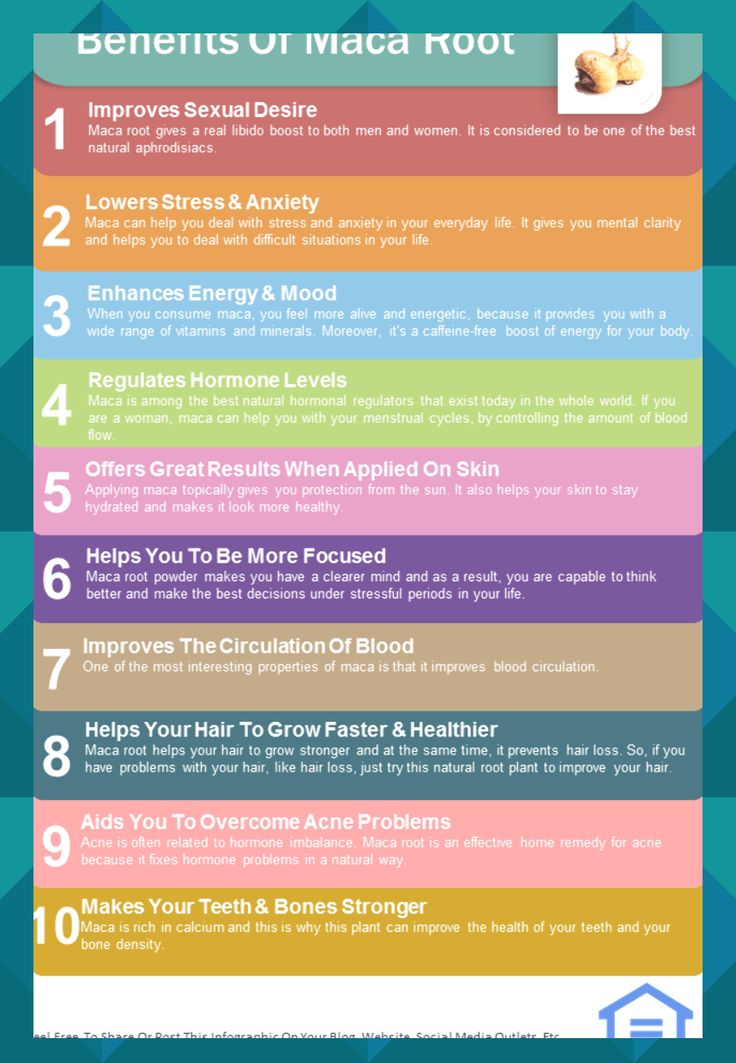 Clinically, the disease is manifested by muscle cramps, more often cramps occur in the fingers, sometimes in the muscles of the face.
Clinically, the disease is manifested by muscle cramps, more often cramps occur in the fingers, sometimes in the muscles of the face. - salivation - increased secretion of saliva, in connection with which there is a large loss of fluid (up to 1 liter per day). Salivation can be an independent manifestation of toxicosis or accompany vomiting of pregnant women. In the development of salivation, not only changes in the central nervous system are important, but also local disturbances in the salivary glands and their ducts under the influence of hormonal changes.
- Pregnancy bronchial asthma is an extremely rare form of preeclampsia.
- pregnancy osteomalacia - softening of the bones due to a violation of calcium and phosphorus metabolism, while the bones of the pelvis and spine are more often affected
- neuropathy and psychopathy of pregnant women.
Causes of toxicosis in the early stages
There are many theories trying to explain the causes and mechanisms of early toxicosis: the most recognized are the so-called neuro-reflex and immunological.
According to the neuro-reflex concept , vomiting occurs as a result of a violation of the relationship between the cerebral cortex and subcortical structures. During pregnancy, the subcortical centers of the brain begin to work more intensively than usual, which are responsible for most protective reflexes, including breathing and cardiac activity. In the same areas of the subcortical structures are the vomiting and salivary centers, the nuclei of the olfactory system of the brain. Excitation processes also capture them. Therefore, nausea and vomiting may be preceded by such phenomena as deepening of breathing, increased heart rate, an increase in the amount of saliva, pallor due to vasospasm, and a change in smell.
Immunological disorders play a certain role in the development of preeclampsia . The timing of the onset of vomiting usually coincides with the formation of blood circulation in the placenta, increased reproduction of white blood cells - lymphocytes, which are involved in immune reactions. The fetus is foreign to the mother's body, and her immune system reacts to it in this way. After the full maturation of the placenta, which accumulates all these immune cells, toxicosis usually disappears.
The fetus is foreign to the mother's body, and her immune system reacts to it in this way. After the full maturation of the placenta, which accumulates all these immune cells, toxicosis usually disappears.
Human chorionic gonadotropin (hCG) plays a certain role in the development of vomiting in pregnant women. This hormone is produced by the placenta during pregnancy. Its high concentration can provoke vomiting.
The severity of toxicosis during pregnancy
The main symptom of early toxicosis of pregnant women is vomiting. Depending on the frequency of its occurrence, as well as the degree of metabolic disorders in the body of the expectant mother, doctors distinguish three degrees of severity of vomiting during pregnancy.
How to manage morning sickness and relieve symptoms
Treatment for mild morning sickness is usually done at home. But, nevertheless, a pregnant woman should be under the supervision of doctors, take all the tests recommended by the doctor, and follow the appointments. This will allow the doctor to monitor the condition of the future mother's body and prevent possible complications in time. A woman needs to organize a normal sleep and rest regimen, walks in the fresh air, a calm atmosphere in the family are shown.
This will allow the doctor to monitor the condition of the future mother's body and prevent possible complications in time. A woman needs to organize a normal sleep and rest regimen, walks in the fresh air, a calm atmosphere in the family are shown.
Proper nutrition
You need to eat in small portions, fractionally, every 2-3 hours. Food should be easily digestible, high-calorie and fortified whenever possible. In connection with a decrease in appetite, they recommend varied and pleasant food for the expectant mother, that is, products are selected taking into account the desires of the pregnant woman, with the exception of spicy dishes and smoked meats. It is important to remember that very hot or very cold food often induces vomiting, so the dishes should be warm. Reception of alkaline mineral waters in small volumes 5-6 times a day is shown.
If nausea and vomiting occur in the morning, immediately after waking up, it is recommended to have breakfast while lying in bed without getting up. For breakfast, you can eat dry crackers, crackers, drink tea or water with lemon, light yogurt is allowed. It is better to put all this next to the bed in advance or ask someone to bring breakfast.
For breakfast, you can eat dry crackers, crackers, drink tea or water with lemon, light yogurt is allowed. It is better to put all this next to the bed in advance or ask someone to bring breakfast.
Every woman chooses for herself a remedy that helps to fight nausea. Someone helps a slice of orange, lemon or apple, some expectant mothers carry crackers or mint sweets with them to alleviate the symptoms of toxicosis. Pumpkin juice has a good antiemetic effect. Many pregnant women benefit from ginger tea. It is prepared very simply:
ginger root finely chopped or grated on a coarse grater is poured with boiling water and infused for 15-20 minutes. Tea can be drunk warm or chilled, adding lemon, mint or honey to it.
Fats and proteins of animal origin are recommended to be consumed in the morning, when pancreatic enzymes are more active. Dairy products are best eaten after dinner or before bed.
Do not use food with preservatives, broiler meat, fast food, fast food.
To maintain metabolic processes in the body, it is advisable to drink 2-2.5 liters of fluid per day. With increased vomiting, it is not recommended to consume solid and liquid food at the same time. Liquids should not be drunk 30 minutes before and within 1.5 hours after eating, as this provokes vomiting by stretching the walls of the stomach and affecting the receptors.
Decoctions and infusions
Oat broth
As an enveloping agent, that is, a substance that forms a mucous film and prevents irritation of receptors on the walls of the stomach and intestines, oat broth is recommended. It is prepared as follows: 2-3 tbsp. spoons of oat grains are washed, pour 500-700 ml of water, boil over low heat under a lid for 30 minutes. The broth is drained, the grains are crushed and poured with new water and boiled until fully cooked. The resulting mass is crushed with a blender. You need to use the decoction on an empty stomach and in the evening before going to bed, but not earlier than 2 hours after dinner, and also throughout the day in small portions.
It has a particularly good effect in combination with rosehip infusion.
Rosehip tincture
This tincture is a good source of vitamins and microelements – it contains vitamins C, K, P and PP, potassium, manganese, iron, and contributes to the normalization of the gallbladder function. To prepare it, you need 1 tbsp. pour a spoonful of crushed rose hips with 250 ml of boiling water and insist in a thermos for about 2 hours.
The following infusions and decoctions contribute to reducing nausea and improving the condition of the expectant mother.
Phytonast
Take equally: valerian root, common anise fruits, fireweed leaves, linden flowers, marigold flowers, common blueberry shoots, blood red hawthorn fruits. 1 st. Pour 500 ml of boiling water over a spoonful of the mixture ground in a coffee grinder and insist in a thermos for 2 hours, then strain. Take the infusion as needed, up to 6 times a day in a heated form, 1/3 cup.
Benediktov's collection
To prepare this collection you will need: common yarrow (10 g), peppermint herb (20 g), shepherd's purse herb (20 g), valerian officinalis rhizomes (10 g), calendula officinalis inflorescences (20 g) and inflorescences of chamomile officinalis (20 g). Pour 10 g of the mixture with 400 ml of water, soak in a water bath for 30 minutes, strain. Take 50 ml 6 times a day for 25 days, three courses with 15-day breaks.
Pour 10 g of the mixture with 400 ml of water, soak in a water bath for 30 minutes, strain. Take 50 ml 6 times a day for 25 days, three courses with 15-day breaks.
Viburnum with honey
Grind 2 tbsp. tablespoons of fresh viburnum berries, pour 250 ml of boiling water over them, heat for 10 minutes in a water bath, strain, add a little honey. Take 1/3 cup of warm infusion before meals 3-4 times a day.
Cranberries with mint, honey and lemon
Squeeze the juice from 250 g of cranberries, cool it, boil the pulp in 1 liter of water, add 1 tbsp. a spoonful of mint leaves and leave for 15 minutes under the lid. Strain, dissolve in a hot broth 2-3 tbsp. tablespoons of honey, let cool to room temperature, add chilled cranberry juice and a slice of lemon. Drink 0.5 cup after meals or when nausea occurs.
Rose hips with apples
Crushed rose hips (about 1 tbsp) pour 250 ml of boiling water, add 0.5 tbsp. tablespoons of dried apples, heat in a water bath for 15-20 minutes. This drink can be consumed throughout the day instead of tea.
This drink can be consumed throughout the day instead of tea.
Rosehip with garden berries
To make a drink you will need: 1 tbsp. a spoonful of rose hips, 1 tbsp. spoon of raspberries, 1 tbsp. spoon of blackcurrant leaves, 1 tbsp. a spoonful of lingonberry leaves. 2 tbsp. spoons of the mixture pour 500 ml of boiling water, boil for 5 minutes, leave for 1 hour, strain. Take 100 ml of decoction 3 times a day.
Therapeutic exercise
Among non-drug remedies, therapeutic exercise has a good effect. The complex of exercises includes walking, deep breathing with stretching of the muscles of the trunk and limbs. It is necessary to exclude inclinations, they can increase nausea. The complex includes dynamic exercises for training the muscles of the arms, legs, relaxation exercises. Remedial gymnastics also includes training in breathing techniques. As a result, the body is saturated with oxygen, the excitability of the vomiting center decreases - toxicosis is relieved.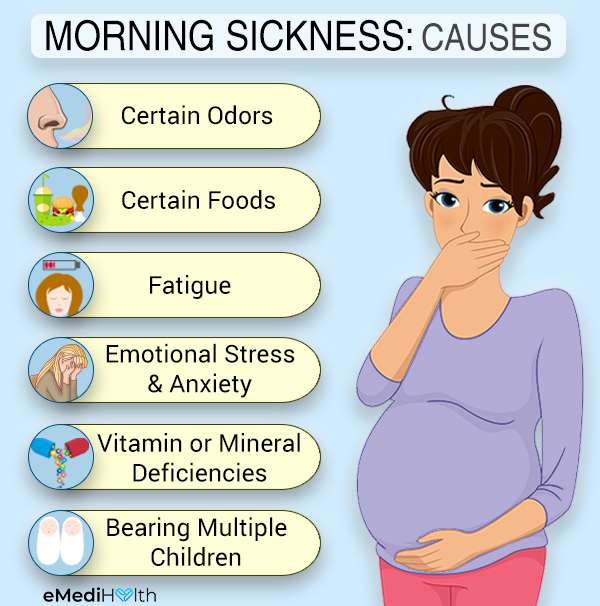
Physiotherapeutic procedures
Physiotherapeutic procedures for the treatment of early toxicosis include electrosleep, acupuncture, laser therapy . Electrosleep is a method that uses low frequency currents to induce sleep. The duration of the procedure is from 60 to 90 minutes, the course of treatment is 6-8 sessions.
Laser therapy
In the complex therapy of early toxicosis, blood is irradiated with a helium-neon laser through a light guide passed through a needle placed in the cubital vein. The procedure lasts 15-20 minutes. The therapeutic effect is achieved due to the influence of the laser on blood cells, changes in its properties, accumulation of biologically active substances in the blood. As a result, the metabolism in cells changes, the resistance of tissues and the body to adverse conditions increases, and the vitality increases.
Acupuncture, acupuncture
These are methods of treatment based on irritation of biologically active points and zones on the body and face. With early toxicosis, such an effect changes the tone of the nervous system of a pregnant woman. A session of acupuncture is carried out 1-2 times a week and lasts 15-30 minutes.
With early toxicosis, such an effect changes the tone of the nervous system of a pregnant woman. A session of acupuncture is carried out 1-2 times a week and lasts 15-30 minutes.
With morning sickness and vomiting of pregnant women, the method of acupressure is effective. To do this, you need to press your finger on a point that is located on the inside of the wrist, in the middle, 3 transverse fingers above the palm.
Aromatherapy
The use of plant aromas has a positive effect on the expectant mother and baby. By inhaling pleasant aromas, you can achieve a good psychological effect, create a good mood, and reduce the effects of toxicosis. During pregnancy, aroma lamps, aroma medallions, pads - sachets are mainly used. To relieve nausea and vomiting, oils of noble laurel, lemon, lavender, cardamom present, dill, lemon balm, peppermint, anise, eucalyptus, ginger are suitable. To flavor the air, you can use the following mixture 0 3 drops of lavender oil, 1 drop of peppermint oil, 1 drop of eucalyptus oil.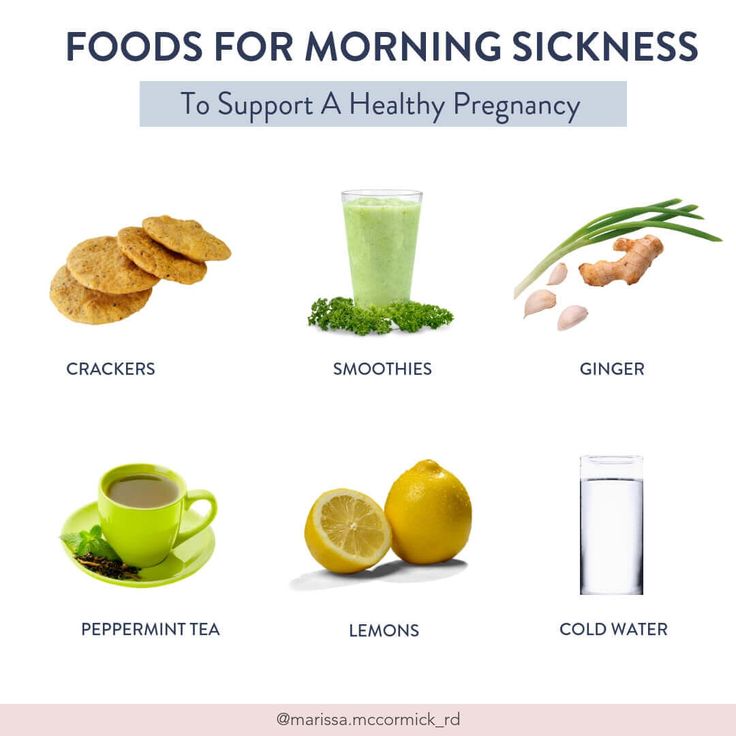
Principles of treatment of early toxicosis
Even with a mild course of early toxicosis of pregnant women, the attending physician will definitely prescribe a number of tests - a general blood test, a general urinalysis, a biochemical blood test, a hemostasiogram. This is necessary to control the condition of a pregnant woman and to timely prescribe medications to correct the changes that occur in the body.
If non-drug remedies are ineffective, the doctor prescribes medications that help fight toxicosis. First of all, these are herbal sedatives, homeopathic medicines for nausea, vitamin B6 preparations, antiemetics.
If, despite all therapy, vomiting increases, the doctor detects changes in blood and urine tests, and body weight continues to progressively decrease, hospitalization is indicated.
The hospital provides intravenous infusion of medicines that restore fluid, trace elements and proteins lost by the body. A pregnant woman receives at least 2-2. 5 liters of fluid intravenously per day.
5 liters of fluid intravenously per day.
To improve blood flow through the placenta and improve oxygen supply to the fetus, oxygen therapy can be prescribed - inhalation of an oxygen-air mixture for 20-30 minutes twice a day.
Most often, the effects of toxicosis gradually decrease by 12-13 weeks of pregnancy.
Mild
Mild vomiting on an empty stomach or after meals occurs 3 to 5 times a day. Despite vomiting, part of the food is still retained and significant weight loss is not observed in such pregnant women. The general condition does not suffer significantly, there are no changes in blood and urine tests. Such vomiting is easily treatable with various non-drug means, and often resolves on its own after the normalization of the diet and rest.
Moderate vomiting
Moderate vomiting (or moderate vomiting) is expressed in the increase in vomiting up to 10 times a day, regardless of food intake. Characterized by persistent nausea. There comes dehydration of the body, a decrease in body weight by 3-5 kg (6% of the initial weight).